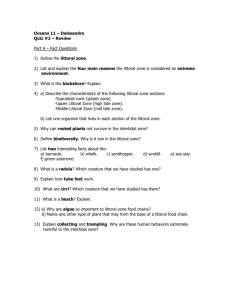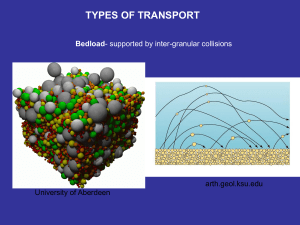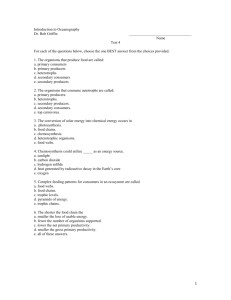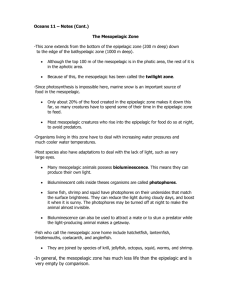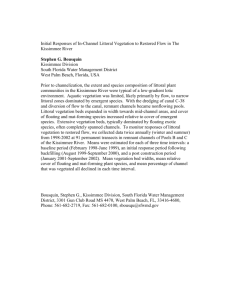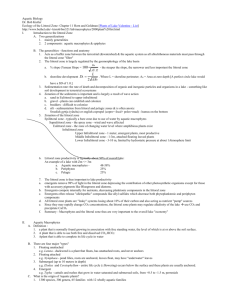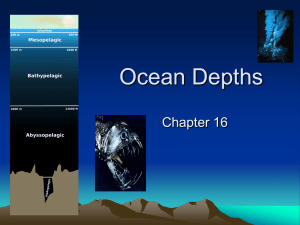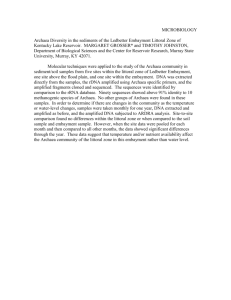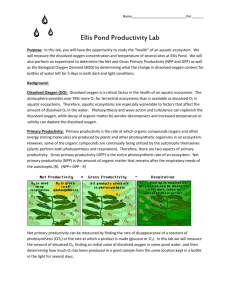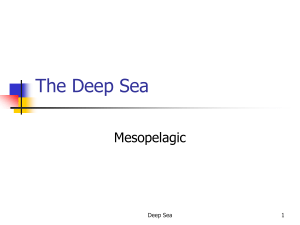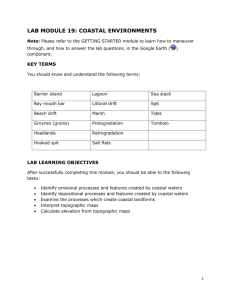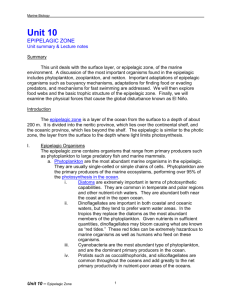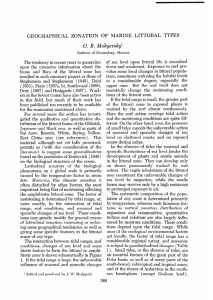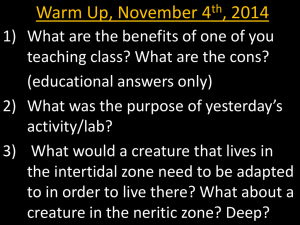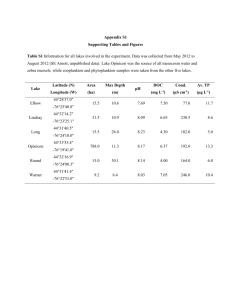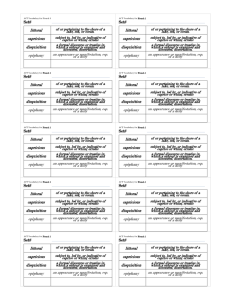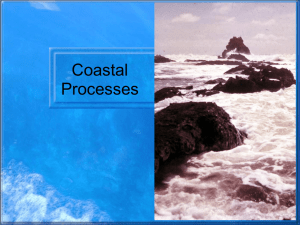Zones of the Ocean - Raleigh Charter High School
advertisement
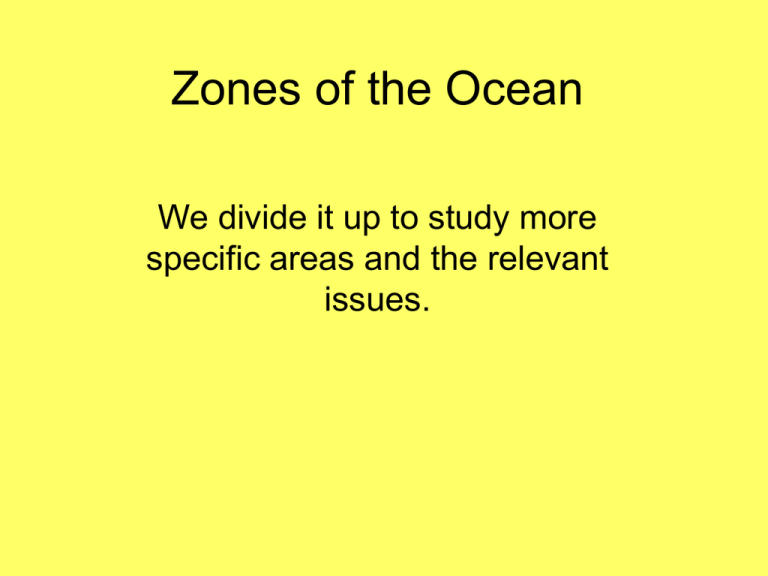
Zones of the Ocean We divide it up to study more specific areas and the relevant issues. Zones by light • Euphotic or photic can be as deep as 200m if water is clear. • Dysphotic is not enough light to do photosynthesis. Littoral zone with animals: note the genus names Questions? • What is the name for spray zone where high tide spashes up and gives it salt water? • What is another name for the littoral zone? • What zone would a starfish be found? • Why can’t a sponge do well in the littoral zone? • When would an organism at the “top” of the littoral zone be under water? Answers • • • • Supralittoral zone; above littoral Intertidal Top of the sublittoral Can never be exposed to the air even when tides are really low. • When there is a spring tide: bigger tide due to sun/moon lining up. Biomass/light/temp with depth Study and answer questions on next page Questions • Is the water above the continental shelf included in the epipelagic zone? • Is the biomass/productivity greater at the top of bottom of the epipelagic zone? • Without looking, what temperature was the thermocline for this picture? • Is the mesopelagic zone: dysphotic, aphotic or euphotic in nature? • Put these five zones in order from deepest to the surface: bathypelagic, epipelagic, hadalpelagic, abyssopelagic, mesopelagic Answers • Yes • Bottom, as the nutrients are more plentiful below the surface and light is still available. • 500-1000m • Generally dysphotic • hadalpelagic, abyssopelagic, bathypelagic, mesopelagic, epipelagic, Beach sections Questions • Which beach zone would include the littoral zone? • Is the berm in the littoral or supralittoral zone? • What two “shores” are separated by the berm? • Swash zone • Supralittoral zone • Foreshore/backshore
